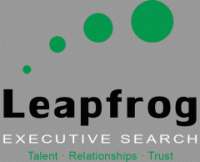Transforming Learning & Development
Category : 2018
From time to time we share content from another HR solutions provider.
Click here to learn more about: Sirius Solutions
Over $70 billion dollars are spent every year in the US on learning & development. This is an increasing trend since the great recession ended. Studies promote development and retention as the new mantra of the C suite. Yet, L&D is often the first area cut during a corporate downturn. Often, that is because in the current model, learning & development does not work effectively for the vast majority of corporate learners. Is all of that money wasted? No, certainly not all of it, but a good amount of those dollars fall far short of the goals and expectations of corporate leaders. The lack of value can and must change as we embrace a new generation of workers.
Millennials constitute 33% of the workforce today and 75% by 2025. It is well documented the people in this generation are more technologically savvy, are interested in personal development, and want to have more control over their career paths. Simply put, a new approach is needed to leverage the technological prowess and developmental focus of the Millennial generation. If L&D is going to be a relevant and a potentially strategic component of organizational goals and objectives, the journey needs to begin now.
Learning is different than training. Training tends to be episodic, one-size-fits-all, and linear, with very little control by the learner. Learning should be continuous and learner-centric – i.e. the learner should be able to seek out information when and how they need it – the same way we gain new information through Google, or You Tube. While development in the new design is correlated with the needs and objectives of the organization, the journey is one the learner enjoys – rather than dreads.
Even more insidious than the episodic approach to training is the lack of opportunity in the current model for true learning transfer and desired behavioral change. Reinforcement of key learning messages does not occur on a consistent and systematic basis. Programs tend to end with no concrete plan for sustaining and even growing the knowledge gained over time.
Here is a remarkable opportunity for Learning & Development to reinvent itself. Learning in the future should be a continuous exercise for all that are focused on how to excel in their current roles and prepare for future roles. Always-on learning, with the learner in more control of how, where, and when they engage should be the focal point. Learning for certain programs will necessitate a deep exploration of a topic, taking more time, whether instructor led, web-based, or a blend. For the majority of learning programs, micro-learning in short bursts, spaced over a period of time will give the learner the time to digest the information and provide a better mechanism for true learning transfer to occur and achieve behavioral change. A critical component of this model gives the learner the opportunity for true reinforcement of learning in an on-demand, just-in-time format that pulls the learner in to seek out information.
The tenants of the Learning & Development 2.0 approach include:
- Learning is continuous, device agnostic, and available 24/7
- Most learning programs whether ILT, WBT, or blended should be spaced out to give learners the time to assimilate new information
- WBT, should primarily focus on micro-learning which is short and to the point, with time between modules to synthesize the information
- Multiple touch points provide reinforcement of key learning messages
- Reinforcement should be systematic, device agnostic and always available. Critical to this model is leveraging content management systems designed to pull the learner in to get information at the point of need and then quickly get out.
- Measurement should occur for every program, tying metrics to key corporate goals and objectives.
Different eras demand different approaches to almost everything in life. We are in a new space and L&D needs to adapt. Those leading-edge organizations that make the journey from training to learning will become employers of choice and will be rewarded with high potential individuals who value development. The stakes are high. The time is now.
